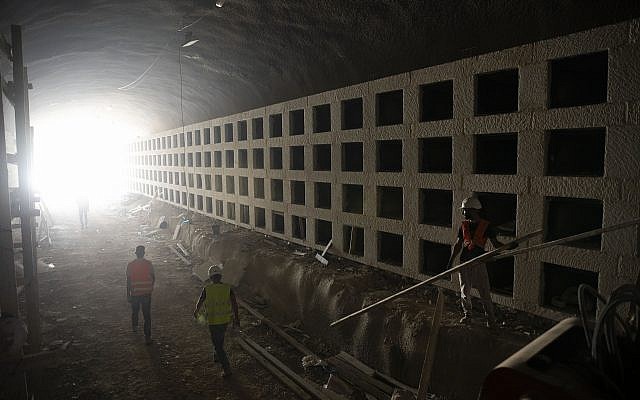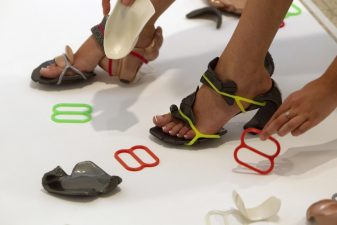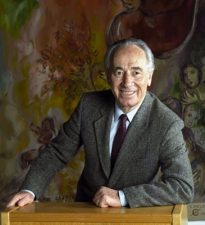Israel is running out of cemetery space. The problem becomes more urgent in crowded city spaces like Jerusalem and Tel Aviv where dense burial is now being practiced. Vertical cemeteries, which are outdoor mausoleums built on concrete tiers, are functioning in Jerusalem, near Haifa and Petah Tikvah, but while they’re more land-economical than field burials, they won’t provide space for burials forever. The solution, taken from ancient Jewish burial customs, is a huge underground necropolis.
The subterranean graveyard, located under Jerusalem’s Har HaMenuchot (Mount of Those Who Are Resting) cemetery, is a project of the private Rolzur company and Jerusalem’s Kehillat Yerushalyim burial society.

Jerusalem’s cemeteries are so crowded that the acropolis model is coming back into style. This time with air conditioning.
No government funds have been allotted for this enormous, needful construction; the burial society is paying for it over ten years. Income for this comes from sales of graves to living people in their preferred locations, for interment of bodies flown in from abroad specially, and to non-Jerusalemites (the government gives free burials only to Israel citizens in graveyards near where they lived.) In other words, if Aunt Edna in Ra’anana wishes to be buried next to Grandma in Jerusalem, she or the family pays privately for the grave.
Watch video about the modern catacomb:
The site has taken three years to build and is expected to house 23,000 graves. The tunnels run over a mile (1.5 kilometers) long. The entire site takes up 25,000 square meters.
The walls are pierced with four levels of empty square spaces for interments. More conventional-looking median floor spaces lie between the walls to accommodate graves. Elevators will carry visitors up and down the proposed 14 burial levels. Walkways accommodate visitors on foot and in wheelchairs, and shuttle carts will be available.
Organic burial pods grow live trees from dead people
Central air conditioning assures visitors of a steady 23° C – 78° F temperature. Light fixtures designed by the German artist Yvelle Gabriel illuminate the intersections, while closer to the graves themselves, other fixtures provide light for visitors to identify the graves and read from prayer books.

The first completed stage of the necropolis will begin accepting burials in October of this year, with room for 8000 graves. Other sections will open as they are finished, over the next seven years. There’s plenty of room to expand underground; the Har HaMenuchot necropolis so far takes up only 5% of the subterranean area available for the future.

Underground cemeteries have been known since at least the second century BCE. Cave burial sites have been found in Beit Shearim (near Haifa, and acknowledged as UNESCO heritage sites) and around Jerusalem. The Jerusalem Jewish burial society anticipates that all sectors of Israeli Jewish society will find the underground necropolis acceptable. Hananya Shahor, executive director , said that Orthodox rabbis they consulted declared it “100% acceptable according to Jewish tradition.”




